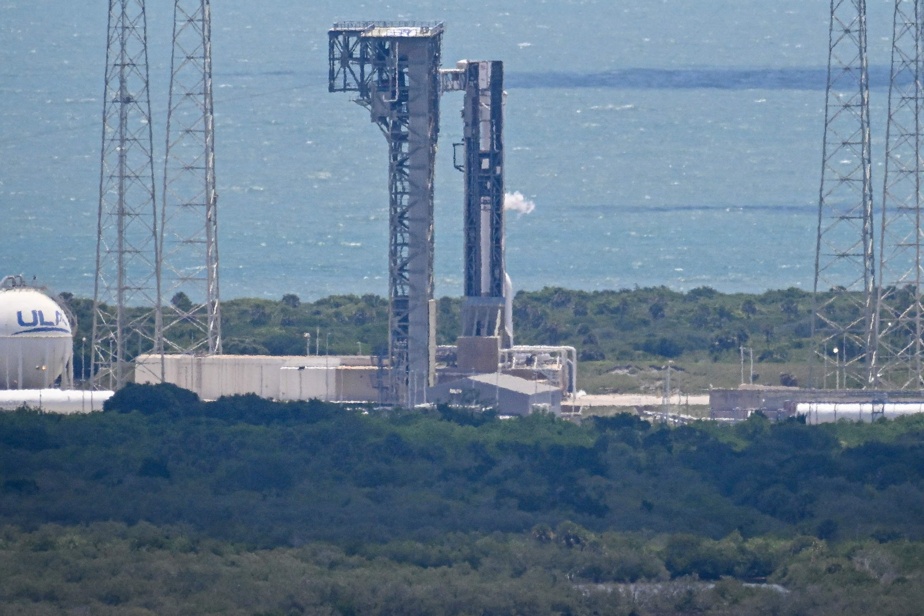(Cape Canaveral) The ship’s first takeoff with astronauts Starliner Boeing’s launch was canceled on Saturday, less than four minutes before the launch due to a technical problem, and a new attempt will not be organized until Wednesday at the earliest, NASA announced.
This mission, awaited for years and whose takeoff had already been canceled for the first time at the last minute in early May, should allow Starliner to transport NASA astronauts to the International Space Station (ISS) for the first time.
Astronauts Butch Wilmore and Suni Williams, two space veterans, were to be launched into orbit on Saturday by a rocket Atlas V of the ULA group, from Cape Canaveral in Florida.

PHOTO MIGUEL J. RODRIGUEZ CARRILLO, AGENCE FRANCE-PRESSE
Astronauts Butch Wilmore and Suni Williams put on their suits before the takeoff attempt.
They were already installed on board the capsule Starlinerat the top of the rocket, when the countdown was stopped dead by a computer automatically checking the last parameters before takeoff.
The teams on site now plan to physically access this computer, located in a building close to the launch pad, to determine the exact cause of the problem, explained Tory Bruno, the boss of ULA, during a press conference.
A new firing window existed as of Sunday, but it will not be used to “give teams more time to evaluate” this problem, NASA said in a statement.
The next launch possibilities are next Wednesday and Thursday, the space agency added.
In the meantime, the rocket has been placed in a secure configuration. The two astronauts, still smiling despite the cancellation, were transported to their base not far away.
Ten years ago, NASA ordered two new vehicles from American companies Boeing and SpaceX to transport its astronauts to the ISS. SpaceX has already been playing this role of space taxi for four years.
Boeing is thus staking its reputation on this test mission, which must demonstrate that its ship is safe before starting regular missions to the ISS.
For NASA, the stakes are also high: having a second vehicle would allow it to better manage possible emergency situations.
New setback
The cancellation on Saturday is a new setback for this mission, which has already fallen years behind schedule.
At the beginning of May, the takeoff had already been canceled at the last moment due to a problem with a valve on the rocket, which has since been changed.
A small helium leak was then discovered on one of the ship’s thrusters. But it was decided not to repair it, which would have required dismantling Starliner. It does not pose a danger and did not expand during preparations for the flight Saturday morning, according to NASA.
These setbacks were only the latest in a series of unpleasant surprises for Boeing, already shaken by safety problems on its planes.
In 2019, during a first uncrewed test, the spacecraft could not be placed on the correct trajectory and returned without reaching the ISS. Then in 2021 a problem with blocked valves on the capsule led to the postponement of a new attempt.
The empty vehicle finally managed to reach the ISS in May 2022.
Other problems subsequently discovered, notably with the parachutes braking the capsule during its return to the atmosphere, again caused delays.
Handful of vessels
Butch Wilmore, 61, and Suni Williams, 58, have been training for several years for this mission.
Both test pilots, they actively participated in the development of Starliner. They have each already been to the ISS twice, where this time they will have to spend a little over a week.
The vessel must also carry with it equipment added at the last minute: a new pump for the system allowing astronauts’ urine to be recycled into water in the ISS.
The pump on board suddenly stopped working this week and urine must be stored in tanks in the meantime, but these capacities are limited.

PHOTO JOEL KOWSKY, NASA/AGENCE FRANCE-PRESSE
The rocket Atlas V on the shooting range Friday evening
Only a handful of American ships have carried astronauts in the past.
After the shutdown of the space shuttles in 2011, NASA astronauts had to travel aboard Russian Soyuz spacecraft.
It is to put an end to this dependence that in 2014, the American space agency signed a contract with Boeing and SpaceX for the development of new vessels.
To everyone’s surprise, SpaceX largely beat Boeing by transporting its first astronauts to the ISS in 2020.
Once Starliner operational, NASA wants to alternate between SpaceX and Boeing flights.
